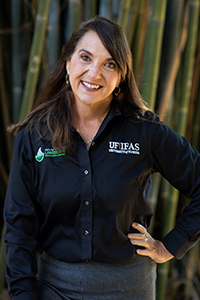Wendy's Wanderings
August 11, 2022
Awaking the Senses
What motivates you to design and maintain your garden and landscape? Is it to create curb appeal for you and your neighbors to appreciate? Maybe it is to establish a habitat for birds and butterflies, or perhaps to make a special garden retreat as a respite from the busy world. It is probably all of these and more, but have you ever thought to establish a garden space that maximizes the sensory impact of all five senses?
A sensory garden is one that incorporates plants and elements that stimulates your eyes, ears, nose, taste buds, and your skin too. You can awaken your senses and sooth your mind by putting the right plant in the right place for the right reasons in a sensory garden.
For your eyes, establish a color theme by selecting flowering perennials or shrubs in the shades you like best. Consider using plants with colorful foliage too, like our native silver buttonwood or the burgundy leaves of loropetalum (Loropetalum chinense). To stimulate your sight, think about adding texture with large bold leaves from magnolias or wispy leaves from plants like bamboo mulhly grass (Muhlenbergia dumosa). Your garden accessories, benches, or fences can be painted with a bright hue to bring a splash of color to an otherwise plain spot.
Fragrance in the garden can be a very personal choice. We all have our favorite scented flowers like gardenias, roses, jasmines or, for South Florida, the exotic ylang ylang (Cananga ordorata). When selecting scented flowers, think about when they bloom so you can enjoy fragrance in the garden for as many months of the year as possible. Good smells can come from leaves, too. Strolling around the yard crushing rosemary, allspice (Pimento dioica), and citrus leaves is a fantastic way to create a sensory moment in the garden.
Tasting in the garden is easy if you have vegetables and fruits. Also include herbs and edible flowers in your sensory garden. The blooms of nasturtiums, violas, and some gingers are edible. My favorite edible flower is crunchy and tart and comes from the costus ginger (Costus woodsonii).
For a tactile experience, most resources on sensory gardens suggest lamb's ear, but this plant isn't too keen on Florida's humidity. Leaves of our native mullein (Verbascum thapsus) are soft to the touch, and the leaves of artemisia are a fuzzy encounter. Both are easy to grow in our Florida-Friendly yards. Touchable sculptures, fountains, and textured handrails can also bring the touchy-feely element to your garden.
Opening your ears in the garden expands the senses and broadens your experiences. You may hear the wind rustle through palm fronds or in the blades of native grasses. Fallen leaves or gravel on a path can crunch under your footsteps. You can even hear the sounds of wildlife you have attracted to your landscape in the buzz of a bee, in birdsong, or in the chatter of squirrels (!). For less subtle sounds add windchimes, a bubbling fountain, or a pond with a waterfall. The sound of moving water provides a relaxing environment and often masks other sounds you may want to drown out.
Sensory gardens are especially enjoyed by the visually impaired. In fact, it was a blind gardener who taught me how to slow down and fully experience a garden for the first time. I am reminded of that lesson when I hold a fuzzy leaf, listen to my footsteps on a rock path, or drink deeply of the perfume of a gardenia flower. It doesn't matter if your space is large or small, you can include elements to make your garden a full sensory experience.
-- Wendy Wilber

